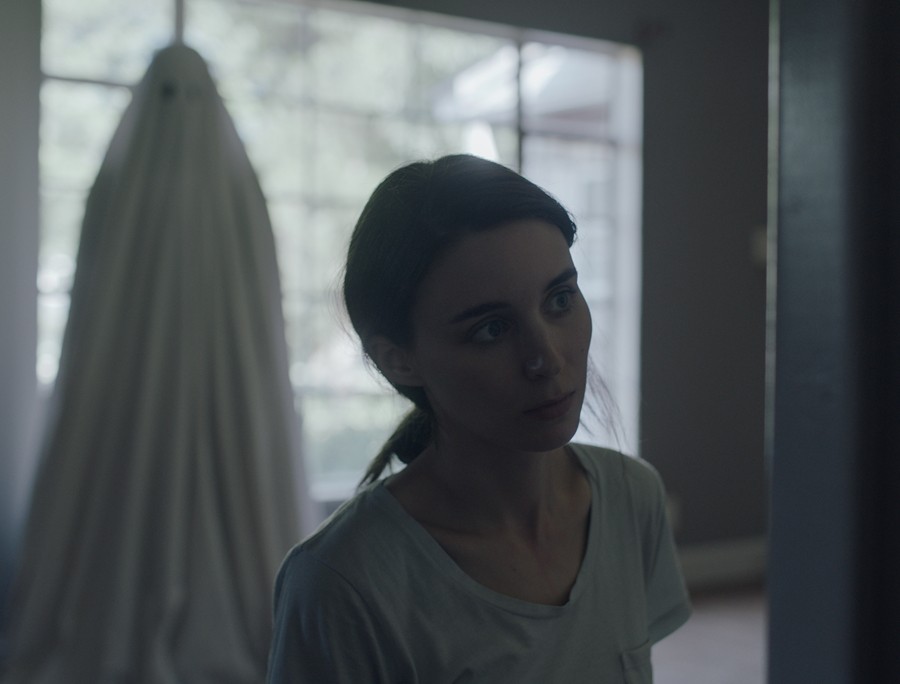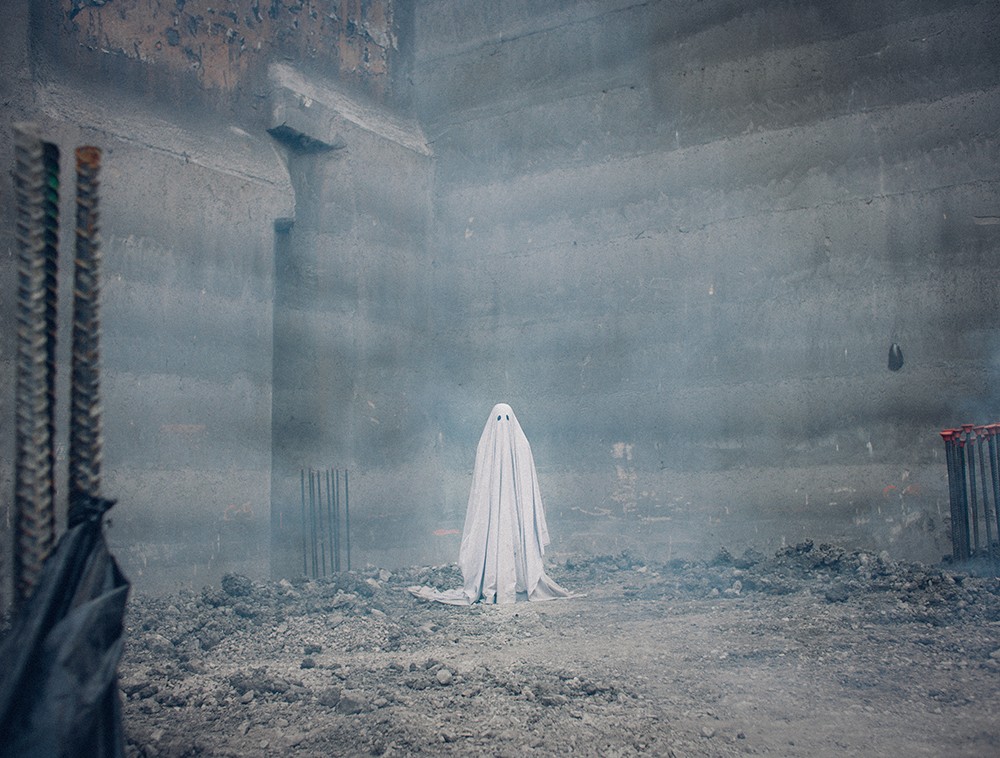A Ghost Story
A Ghost Story, 2017, 3 ¼ stars
Anti-horror
A Ghost Story is more metaphysical than macabre
From The Detroit Metro-Times and The Orlando Weekly, July 26, 2017
“Unique” is an overused and misunderstood word. Being an absolute, it doesn’t play well with comparatives and superlatives. Frankly, it’s best to avoid it completely. But though A Ghost Story is at times exasperating, boring and just plain odd, it is, admittedly, unique.
It’s also, despite the spooky trailers, not a horror film. It could be labeled a mystery or a supernatural drama, but it would be more accurate to call it an anti-horror movie or a metaphysical examination of where – and when – the human spirit goes after death.
Casey Affleck and Rooney Mara play a young married couple. While he’s eking out a living as a musician, she’s busy planning their move from their small, suburban home. But Affleck’s character is strangely drawn to the house, as if they have history there. Reluctantly, he agrees to go, but bad luck interrupts their plans.
It’s impossible to discuss writer-director David Lowery’s film without addressing the elephant in the room. And – spoiler alert – that elephant is Affleck covered from head to toe in a bed sheet for most of the movie. How he got into the bed sheet I’ll let you discover, but because he’s representing his own ghost, or soul, you probably already have a good idea.
The movie isn’t really about one person’s death, though, or even the odd, emotionless grieving process that his wife endures. Indeed, we see little signs of her grief, other than a five-minute-plus continuous shot of her eating almost an entire pie and then barfing it up. As with most of the film, that scene demands patience, and mine started to run thin about 30 minutes in. I was bored sheetless.
 But then the movie started to challenge not just my perception of time and space but also the very nature of ghosts. And with the exception of a pretentious, nihilistic monologue by a character I didn’t know or care about (Will Oldham), A Ghost Story started to hypnotize me with its deliberate pacing. It doesn’t necessarily embrace spirituality, but it does address a spiritual topic in a way that few films have before.
But then the movie started to challenge not just my perception of time and space but also the very nature of ghosts. And with the exception of a pretentious, nihilistic monologue by a character I didn’t know or care about (Will Oldham), A Ghost Story started to hypnotize me with its deliberate pacing. It doesn’t necessarily embrace spirituality, but it does address a spiritual topic in a way that few films have before.
Aesthetically the movie is even more unusual. Shot in the old, classic aspect ratio of 1.33:1, with rounded edges, it looks boxy. And because of its long and medium shots, little dialogue and little camera movement, I thought I might be reminded of a film from the early silent era. But the framing and color palette are more reminiscent of Kodak photographs from the 1960s, and, indeed, I felt like Lowery and his cinematographers were inviting me to thumb through old, strangely intimate snapshots rather than watch a conventional movie. And though Lowery has hinted he wanted the aspect ratio to make his audience claustrophobic, the film creates instead a sense of sad nostalgia, helped along by a prominent, melancholy score.
Above all else, A Ghost Story longs to be a commentary on human legacy, loss and existence. It never fully achieves that goal, but it is nevertheless worth enduring aesthetically to reach what it’s positing philosophically. It’s a haunting cinematic experiment, literally.
© 2017 Euclid Media / MeierMovies, LLC
